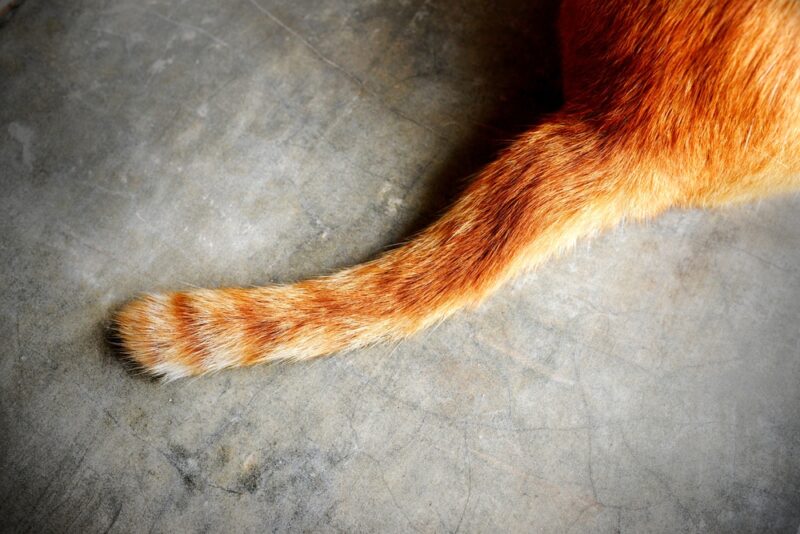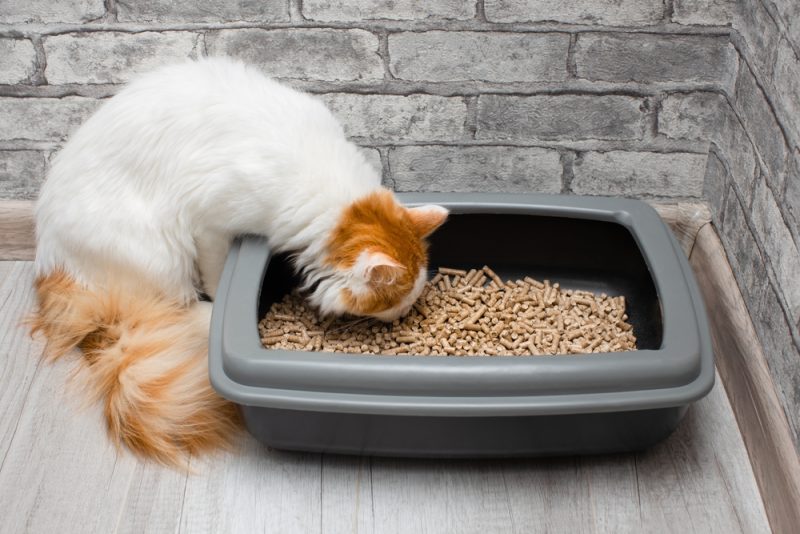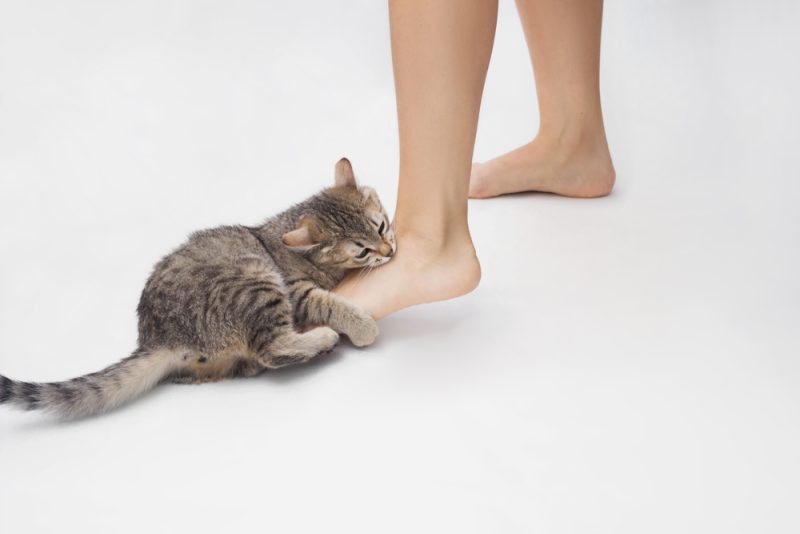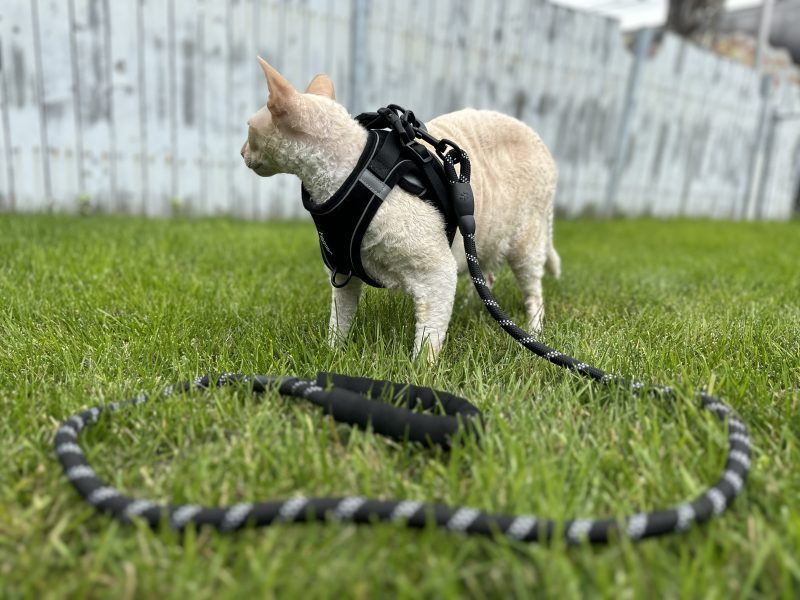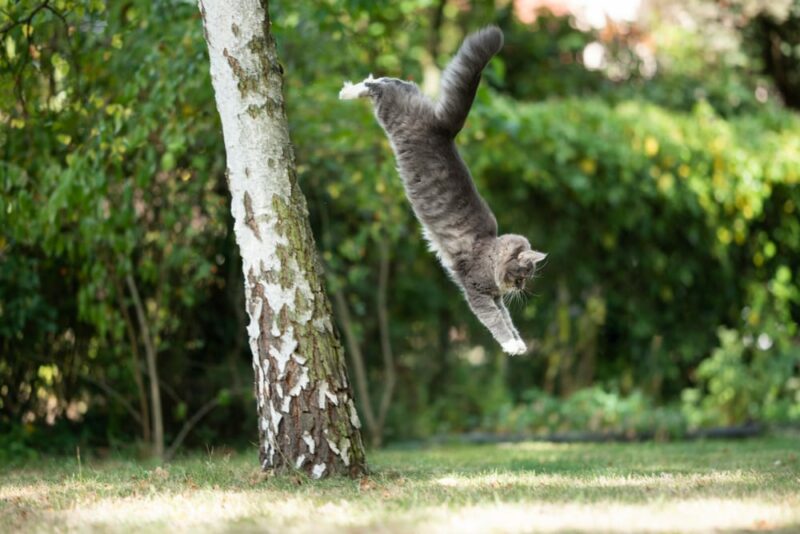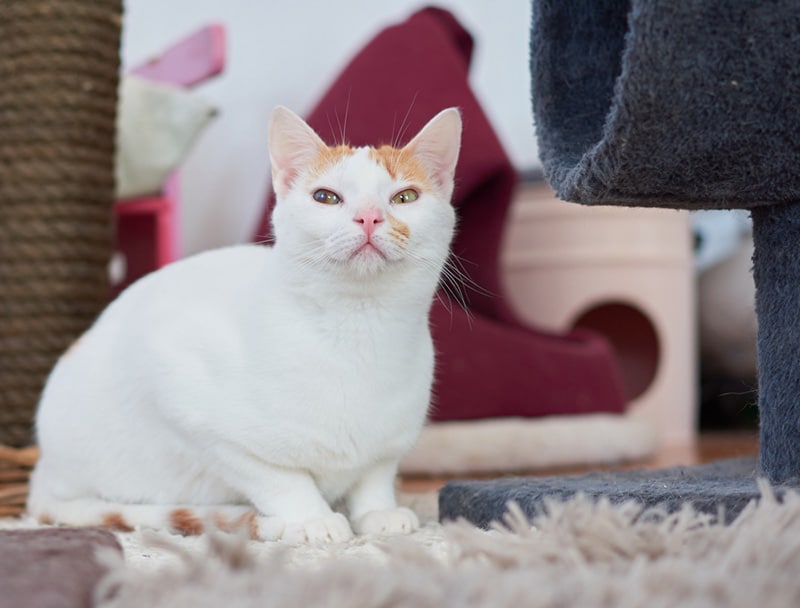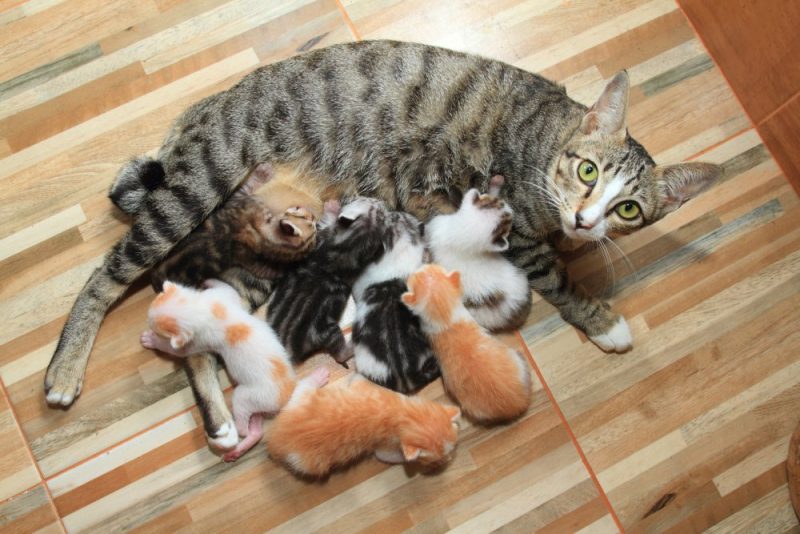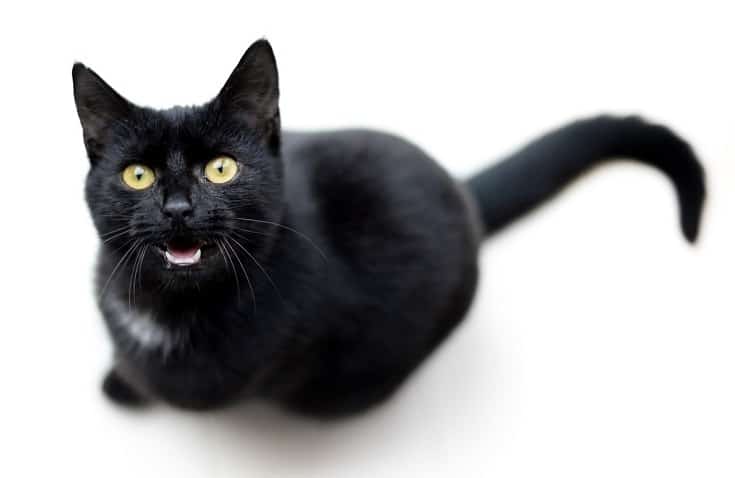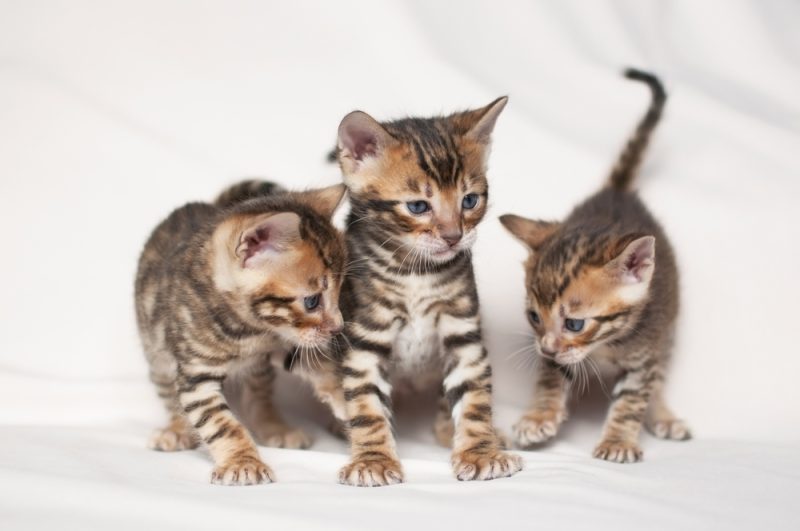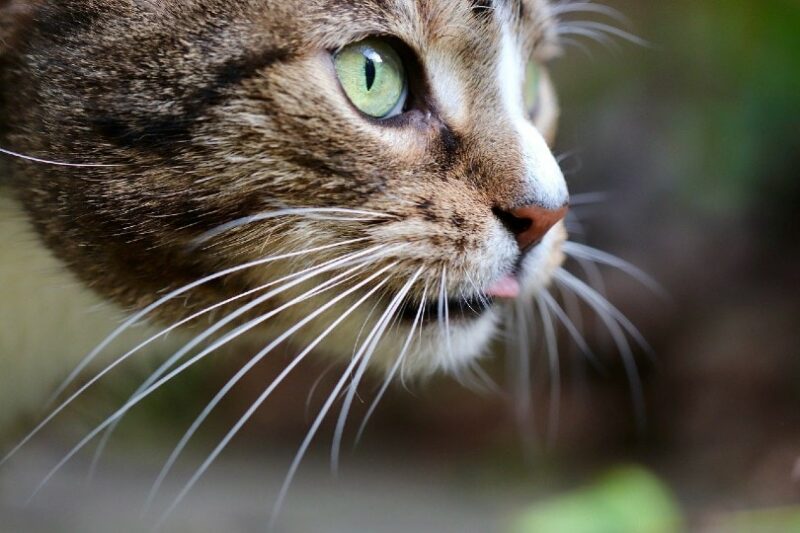A cat’s tail is a fascinating and finely tuned structure adapted for survival in the wild, and yes, it has bones. These are called caudal vertebrae. Long-tailed cats can have anywhere from 19 to 23 bones in their tails. Short-tailed cats or those with no tails understandably don’t have as many vertebrae in their tails.
Your cat’s tail does more than simply tell you when your furry friend is feeling relaxed or annoyed. In this post, we share the basics of cat tail anatomy and cool facts about how tails function.

Cat Tail Anatomy Basics
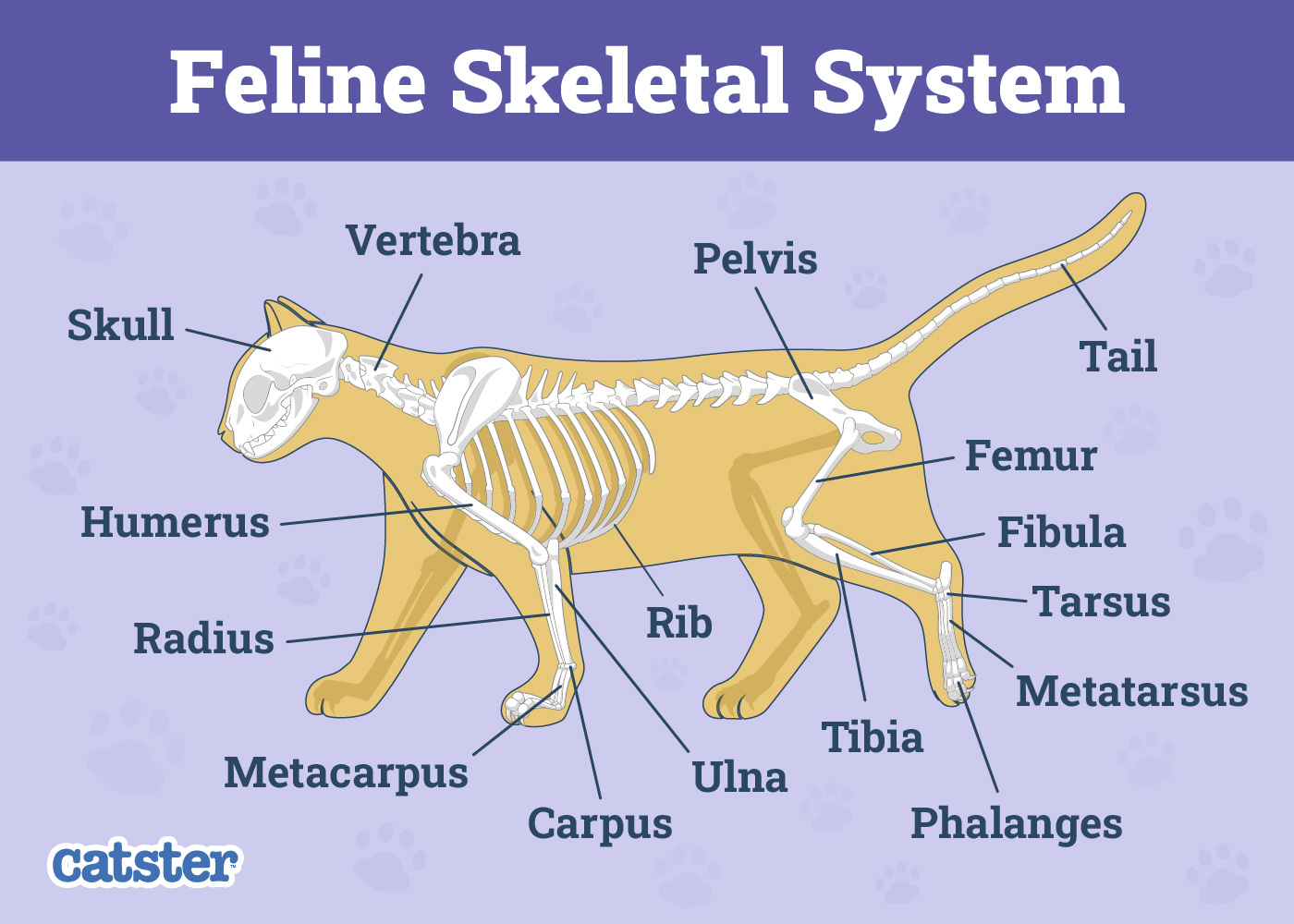
A cat’s tail is made up of a combination of bones, nerves, blood vessels, and muscles. In a long-tailed cat, the tail contains up to 23 vertebrae, which are called caudal vertebrae. Comparatively, humans only have three to five caudal vertebrae, which are fused together to form the coccyx.
At the base of a cat’s tail, the vertebrae are at their largest, and they get smaller along the length of the tail toward the tip. The vertebrae that form the tail are an extension of the cat’s spine. In between the vertebrae are soft discs that enable flexibility of movement.
Anyone who’s observed a cat’s tail is well aware of how flexible it is, as it’s able to move in many directions effortlessly. This is due to the fact that unlike humans, all of a cat’s vertebrae (including those in their tail) are held together by muscles, not ligaments. This gives cats far more flexibility and enables them to bend their spine in an impressive arch (though this is also a popular yoga stretch for us!).
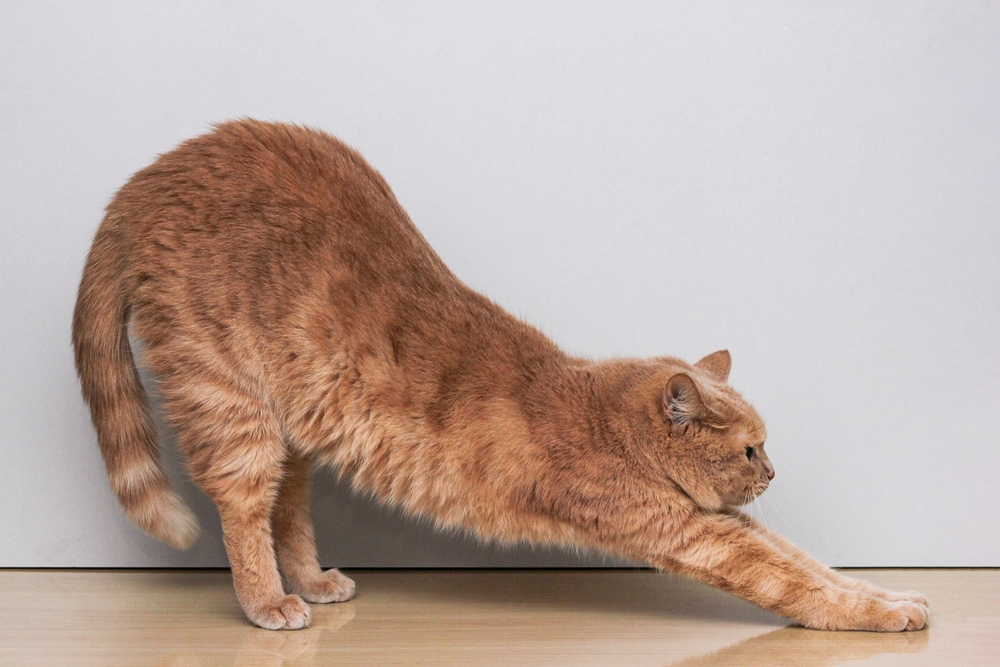

The 4 Cat Tail Facts
If you’re curious about how your cat’s tail functions and the range of emotions it can express, here are some amazing cat tail facts.
1. Tail Pulling Is Dangerous
Since a cat’s tail connects to their spine, pulling it is extremely painful and dangerous for the cat. Doing it hard enough can cause permanent nerve damage. As such, you should never pick up a cat by their tail. Also, if you suspect that your cat is suffering from a tail injury, please see your vet.
If you need to speak with a vet but can't get to one, head over to PangoVet. It's an online service where you can talk to a vet online and get the advice you need for your pet — all at an affordable price!

2. Cats’ Tails Help Them Balance
If you’ve ever spotted your cat effortlessly navigate a narrow fence and wondered how they manage it, it’s partly because their tail acts as a counterweight to help them stay upright. It also helps them make sharp turns without toppling over, which is important in the wild because it means cats can catch prey more effectively.
3. Tails Are Tools of Communication
Your kitty may not be able to verbally tell you something, but pay attention to their tail, as cats use it to convey a wide range of emotions. For example, if your cat’s tail is thumping on the ground and whipping back and forth, it may indicate that they’re irritated or in attack mode, so you might want to back off.
However, tail language on its own isn’t an indication of a cat’s state of mind and should be cautiously interpreted with the rest of their posture (the position of their ears, the sounds they’re making, their pupils, their body stance, and so on).
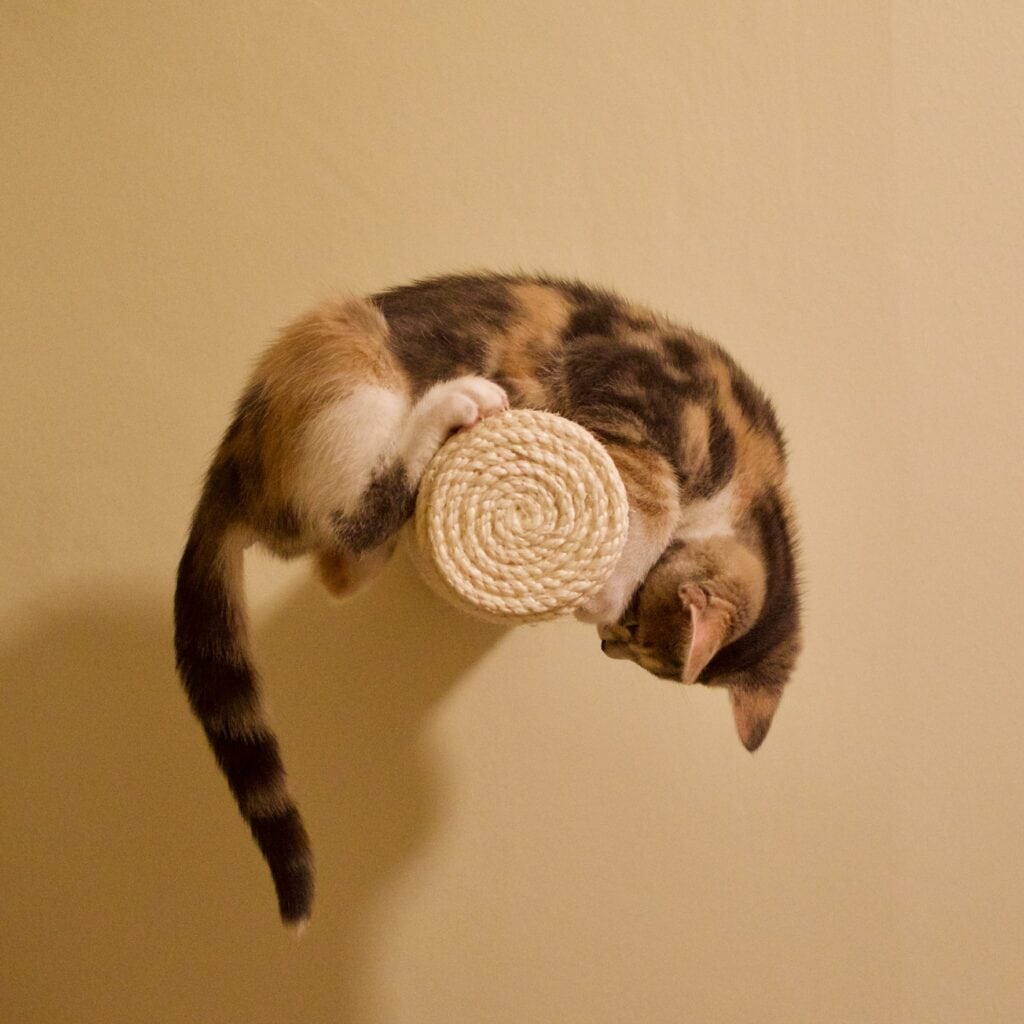
4. Cats Can Balance Without Tails
Some cats, like Manx cats, are born tailless, and others must undergo amputation due to an injury. Cats born without tails don’t have any issues with balance. While those that lose their tails later in life will likely have some problems with balance and movement at first, as they heal, the cat should start to adapt to life without a tail.

Final Thoughts
To recap, cats do have bones in their tails. Long-tailed cats have up to 23 tail bones, which are also known as the caudal vertebrae. The tail is a truly intriguing part of a cat’s anatomy that serves a great number of purposes in terms of survival and communication. Damage to a cat’s tail can affect other areas of their body and cause some serious issues, so be sure to take special care of your kitty’s behind! If you suspect that your cat is suffering from a tail injury, please see your vet.
Featured Image Credit: italay, Shutterstock
